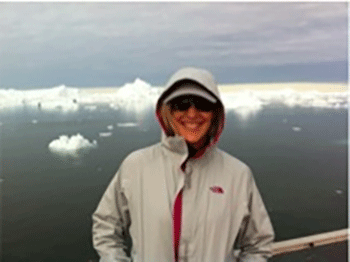
The dirt under your feet is easy to overlook.
But just because it’s common doesn’t mean it’s boring. Some researchers call soil the skin of the Earth.“It’s the most important part of the planet, because it covers everything,” says Lorna Dawson. She’s a soil scientist at the James Hutton Institute in Aberdeen, Scotland.
Soil is the complex mix of minerals, carbon-rich matter, water and air that forms Earth’s surface layer. It does crucial jobs such as growing our food, cleaning the air and storing water. Soil contains the decomposing remains of plants and animals. And it’s alive with countless microbes, such as bacteria and fungi.
Soil also holds clues to major unsolved mysteries. Deep layers in bogs contain evidence of the activities of ancient peoples. Dirt under a shoe or on someone’s clothing can help scientists like Dawson catch criminals. And high in the Arctic, frozen soil holds bacteria that might one day help protect the planet.
Digging in frozen soil
Janet Jansson studies soil that is permanently frozen. Called permafrost, it covers a large portion of Earth’s Arctic surface. It also accounts for almost one-fourth of all land in the Northern Hemisphere.

But scientists worry that some permafrost might not be permanent much longer. Human activities in recent decades have been spewing excess carbon dioxide and other greenhouse gases into the atmosphere. Those gases trap heat close to the planet’s surface, driving up temperatures. Not surprisingly, temperatures have been rising all across the globe, especially up north. That could spur big areas of permafrost to melt.
Because permafrost performs a really important job, its loss could lead to many problems.
Tundra is a treeless zone of vegetation in the far North that sits above permafrost. Its soils lock up one-third of all the carbon in soils across the planet. If the permafrost were to melt, dead plant matter in the soil would begin to rot. This would release the carbon that had been in those plants. Some of that carbon would enter the air as carbon dioxide gas. Scientists fear this could lead to even more global warming.
Jansson believes soil bacteria may be key to understanding how fast that plant carbon would be released. She’s a microbiologist at the Pacific Northwest National Laboratory in Richland, Wash. There, she studies the bacteria that live in frozen soils within the Arctic Circle at sites within Alaska and Greenland.

Some climate and soil scientists think microbes could speed the thawing of permafrost and its release of greenhouse gases into the atmosphere. Other microbes, however, might slow that process. Jansson is trying to find out how the interplay of microbes affect the release of carbon from soils. “Knowing which bacteria are there and what they’re doing can help us make better predictions,” she says.
A single teaspoon of soil can hold up to one billion bacteria. These microbes form tight-knit communities. This can make it hard to figure out which types of bacteria are present. Some of them also have proven hard to grow in the lab. Now Jansson doesn’t have to. She uses a set of techniques called metagenomics (MEH-tah-jeh-NO-miks). They allow her to analyze the genetic material in her soil samples. By focusing on their genes, she can now identify many of those soil bacteria.
Jansson hopes to find types of permafrost bacteria that naturally suck carbon dioxide out of the air, pumping it underground where it can be stored (without raising air temperatures). Understanding how these bacteria work might even help scientists invent new ways to reduce levels of carbon dioxide in the atmosphere, she says.
For example, scientists might one day “feed” helpful microbes to permafrost and other soils. These extra bacteria could then soak up more carbon from the atmosphere, storing it underground. This might be one way to fight global warming, she hopes.

Catching criminals
Jansson studies dirt in cold places. Others are using dirt to solve cold cases.
For nearly two decades, Lorna Dawson studied how different types of soil form. Her career took a turn in 2003, when a police officer came to her lab and asked Dawson to…
The post Cool Jobs: Unearthing the secrets of soil appeared first on FeedBox.